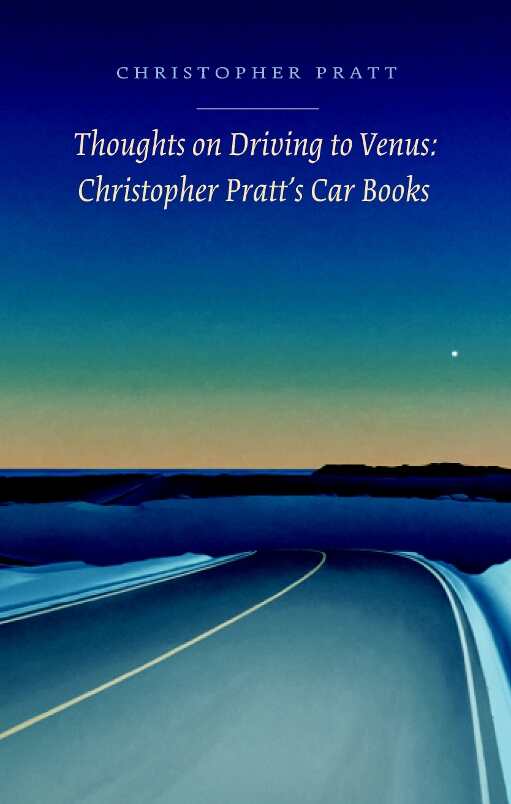Thoughts on Driving to Venus
Christopher Pratt's Car Books
Ribbed paper, evocative language, and sculpted lines make Thoughts on Driving to Venus an interactive artistic experience of the highest order.
Canadian artist Christopher Pratt’s transcribed “car books” are gathered together in Thoughts on Driving to Venus, an intersensory and multiyear account of his travels across Newfoundland in search of meaning and inspiration. Natural poetry comes through these keen and artistic observations that bring the distant north to life.
Pratt’s car books are situated in the ever-changing landscape of Newfoundland–a land that is gorgeous and unyielding by turns, that brims with silver-greys and sunlit treetops, but where abandoned shanties and unused lobster pots also abound. His observations capture both the beauty and poverty of the landscape.
Lines of thoughts, both idle and grand, gather on the page, transcribed from the passenger’s side as Pratt’s wife Jeanette ferried him from one end of the island to another: lines written in preparation for paintings; lines that seek the meaning of paintings once made; and lines that are always willing to pause to laud a good cup of Horton’s coffee. Those familiar with the process of bringing art to life will find Pratt’s musings, which ebb and flow between passion and exhaustion, both sympathetic and endearing.
The layered nature of Pratt’s artistry stands to fascinate: paintings are less something that come to him than stories that are chased, as landscapes that looked one way years ago prove wholly different on second pass. He snaps photographs in the right light, and jots notes to capture what the camera cannot:
The sun, which had been shielded by the horsetail clouds, makes a low-angle reappearance and as suddenly the forest glows as if it were phosphorescent, still richly darker than the sky. Then only the tallest trees are lit–a dust of golden snow blown across their tops. Finally they gather to themselves.
Such moments bring stilled dimensions back to life, honoring motion and change. Pratt is convincing at presenting his artwork as “encounters with places,” images about, rather than of, the places that he visits. Each tells a story. Each finds a new way to package the glittering grey. And so, too, does each painting coalesce beneath the brush of an artist who has been told that greens sell less, and who cannot excise that practical knowledge from his work.
Midway through the book, the car books themselves become part of Pratt’s exhibits, making interaction with the text a fascinating and informative gallery-esque experience. Lines on disillusionment are moving; brief thoughts on the responsibility of the Canadian government toward nations abroad capture the time period beyond the province. Pratt’s entries are adept at both humor–“Stopped at McDonald’s in Grand Falls for lunch. Many fat people.”—and philosophy, as he warns fellow travelers that revisiting a place you love too often robs it of its emotional power. Skating through the icy landscapes with Pratt is a continually rewarding experience.
Ribbed paper, evocative language, and sculpted lines make Thoughts on Driving to Venus an interactive artistic experience of the highest order. It is an experience that appeals to all of the senses as it introduces Newfoundland to audiences with loving attention, and with the exquisite pain of acknowledging that not every moment can be maintained, no matter how devout an artist is.
Reviewed by
Michelle Anne Schingler
Disclosure: This article is not an endorsement, but a review. The publisher of this book provided free copies of the book and paid a small fee to have their book reviewed by a professional reviewer. Foreword Reviews and Clarion Reviews make no guarantee that the publisher will receive a positive review. Foreword Magazine, Inc. is disclosing this in accordance with the Federal Trade Commission’s 16 CFR, Part 255.

